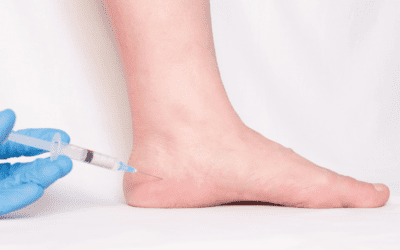One of the major complications is the problem of the diabetic foot, a topic that deserves our full attention.
It is undeniable that diabetes is one of the most widespread chronic diseases around the world. With millions of people affected by diabetes, the complications associated with it are continually increasing.
History of Diabetes and its Complications
Since ancient times, diabetes has been recognized as a severe disease, with the first descriptions coming from ancient Egypt and India. These ancient civilizations already noted the propensity for diabetic individuals to heal slowly from their wounds, particularly on the feet. It was not until the 20th century that doctors began systematically linking diabetes to various complications, including diabetic foot.
Diabetes primarily manifests in three types: type 1, type 2, and gestational diabetes. Although all are characterized by high blood sugar levels, their origins and implications vary. Type 1, usually diagnosed in children and young adults, is an autoimmune disease. Diabetes type 2, the most common, is often linked to obesity and a sedentary lifestyle. It frequently comes with complications, including diabetic foot. Lastly, gestational diabetes, occurring during pregnancy, can increase the risks for both the baby and the mother.
Fundamentally, diabetes results from a dysfunction in the body’s production or utilization of insulin. Insulin helps regulate the blood sugar levels. When this regulation fails, it damages the blood vessels and nerves. This is particularly problematic for the feet, where decreased blood circulation and loss of sensation can lead to severe complications.
Diabetic Neuropathy: A Path to Insensitivity
Diabetic neuropathy, specifically, is a direct complication of diabetes. It stems from nerve damage, particularly in the feet. Over time, diabetic patients may lose sensitivity in their feet, a phenomenon referred to as loss of sensation. This loss of sensation is often accompanied by a burning sensation or other neuropathic symptoms.
Mechanisms:
- Hyperglycemia and protein glycosylation: High levels of glucose in the blood can lead to glycosylation (the addition of glucose molecules) of nerve proteins, impairing their function.
- Microvascular damage: Hyperglycemia also causes damage to the small blood vessels (microvasculature) that supply the nerves. This decreased blood supply deprives the nerves of necessary nutrients and oxygen for their proper function.
- Oxidative stress and inflammation: Hyperglycemia can induce oxidative stress and inflammation, contributing to nerve damage.
The symptoms vary depending on the type of diabetic neuropathy:
Peripheral neuropathy: This is the most common type. The initial symptoms are often tingling, numbness, or pain in the feet. Over time, these sensations can spread to the legs and hands. In severe cases, patients may develop wounds or ulcers without realizing it due to the loss of sensation.
Autonomic neuropathy: It affects the involuntary functions of the body, such as digestion, bladder function, blood pressure regulation, or sweating.
The major concern with this neuropathy is that it opens the door to injuries. Since patients no longer have the necessary sensitivity to perceive pain, a simple wound can go unnoticed, leading to serious complications. Nerves and blood vessels are essential for the health of the feet, and when affected by neuropathy, the risks increase.
Complications of Diabetic Foot and Ulcer: A Vicious Cycle
The symptoms of diabetic foot do not stop at neuropathy.
Poor blood circulation, often due to blood vessel damage, can complicate the healing of wounds on diabetic feet. This, coupled with a decreased sensitivity to pain, makes these feet particularly vulnerable to infections.
The diabetic plantar ulcer is one of the most dreaded complications of the diabetic foot. It is an open wound that primarily forms on the sole of the foot in diabetic patients. This condition is the result of a combination of several factors, including reduced sensitivity due to diabetic neuropathy, poor blood circulation, anatomical abnormalities of the foot, and often excessive pressure on certain areas of the foot.
The feet of diabetic patients are particularly vulnerable due to the loss of sensation caused by neuropathy. This loss of sensation means that a small injury or excessive pressure can go unnoticed, allowing a wound to develop.
Once formed, the ulcer is at a high risk of infection, particularly because diabetes compromises the immune system, making infections more difficult to treat. Moreover, poor circulation, common in diabetics, slows down the healing process.
Preventing diabetic plantar ulcers is essential and relies on several pillars.
Daily self-examination of the feet to detect any abnormalities, wearing appropriate shoes to minimize pressure points, regular consultation with a podiatrist, and strict blood glucose control are all crucial preventive measures.
If an ulcer develops, treatment should be immediate and might include antibiotics to treat or prevent infection, surgical debridement to remove dead tissue, and local care to promote healing. In extreme situations, the ulcer may lead to amputation, thereby highlighting the vital importance of prevention and prompt management.
The Diabetic Foot Problem Risk Factors and Prevention
It is crucial to understand the risk factors associated with diabetic foot. The level of diabetes control, the duration of the disease, along with other diabetes-related impairments, can increase the risk. However, the good news is that many complications can be prevented.
Foot care is paramount, the use of appropriate footwear, such as orthotic insoles, can help reduce the risk of injuries. Moreover, daily foot inspection, treating calluses, bone deformities, and avoiding wounds are essential measures. The Canadian Diabetes Association, for instance, offers detailed recommendations to maintain optimal foot health.
The Life-saving Role of the Podiatrist
A podiatrist, an expert in foot health, plays a critical role in the treatment and prevention of diabetic foot. Whether it is treating ulcers, advising on the best footwear, or educating on the best foot care practices, their contribution is invaluable. Regular check-ups with this professional can make the difference between a healthy foot and major complications.
Case Studies, Testimonials, and International Comparison
Many diabetic patients have undergone the traumatic experience of complications related to the foot. Some report not noticing a small cut or scrape that later transformed into a severe infection. These stories underline the importance of daily foot examinations and early medical intervention.
The approach to diabetic foot treatment varies from country to country. For example, in some Scandinavian countries, the emphasis is on prevention and education, with dedicated national programs. These countries have amputation rates lower than the global average. Conversely, in some developing regions, the lack of access to basic care can lead to higher amputation rates.
Medical technology has made great strides in the management of diabetic foot. Socks equipped with sensors can detect areas of heat or excessive pressure, thereby preventing wounds. Furthermore, advances in telemedicine allow for remote monitoring, essential for patients living in remote areas.
Psychological and Social Impact, and Economic Cost
The implications of diabetic foot extend far beyond physical pain. The fear of reduced mobility or even amputation can cause anxiety and depression. Socially, individuals may feel isolated, affecting their quality of life. Support groups and targeted therapy can help mitigate these effects.
The Diabetic Foot Problem conclusion
Diabetic foot problem, with its numerous complications, remains a major challenge for diabetic patients. However, awareness coupled with active prevention can make all the difference. Let us not forget the importance of regular foot examinations, the vital role of the podiatrist, and the recommendations of specialized associations. By implementing these measures, we can collectively contribute to reducing the risks and ensuring better health for diabetic feet.



